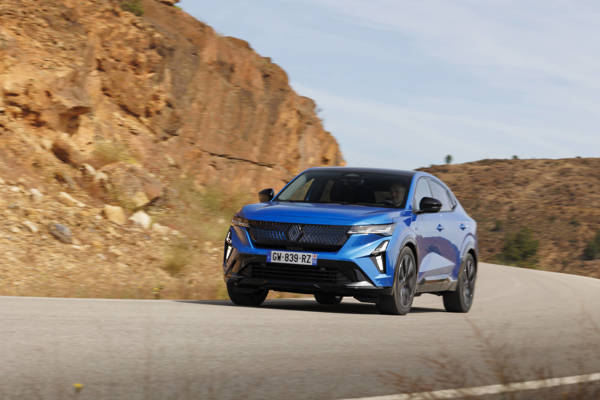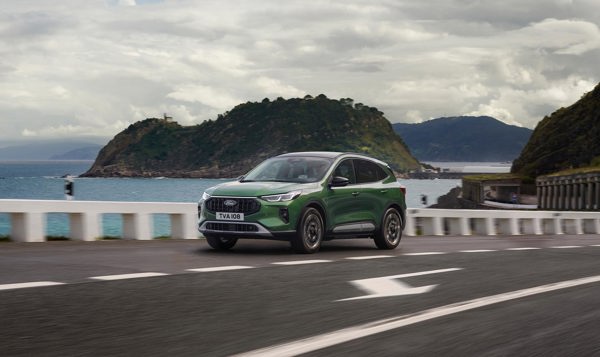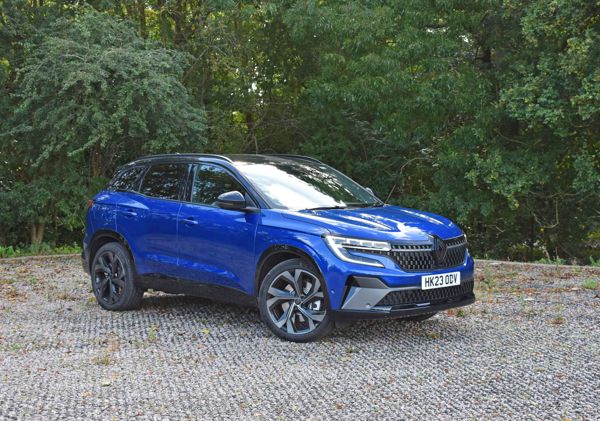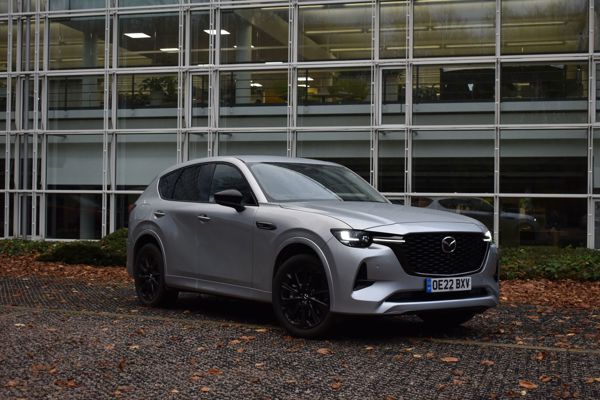Review
The all-new Kuga “is our best example yet of Ford’s human-centric design approach; developed in close collaboration with SUV customers to deliver distinctive style, unprecedented powertrain choice, premium comfort and advanced technologies that make life easier for owners inside and outside of the car,” says Stuart Rowley, president, Ford of Europe. Sounds like a lot of marketing speak to me.
However, the Kuga is certainly a good looking and well-built car packed with technology. It has a five-star Euro NCAP rating for safety scoring 92% for adult occupancy, 86% for child occupancy and 82% for vulnerable road users.
Drivers can download the FordPass Connect app which offers a range of remote features including: door lock unlock, vehicle locator, vehicle status (including charge level), charging station finder and remote start, enabling customers to defrost the windscreen or cool down the temperature of their Kuga before beginning their journey.
The app also offers the ability to pre-set charge times to best utilise electricity tariffs. Inside, there’s increased shoulder room, hip room and headroom for front and rear seat passengers, compared with the outgoing model.
Passengers in the rear get heated seats for the first time, and the entire second row can be moved backwards for best-in-class rear legroom (1,035mm), or forwards to increase boot space to a best-in-class 645 litres.
The boot also has a reversible luggage compartment mat with carpet on one side and rubber on the other and a hands-free tailgate which opens using a kicking motion under the rear bumper.
Audiophiles will be more than happy with the 10-speaker Bang & Olufsen sound system, too. New stop and go, speed sign recognition and lane centring technologies are included, while predictive curve light and sign-based light help with night-time driving.
Other notable features fitted to our car include a head-up display, active park assist and wireless phone charging. Perhaps it isn’t just marketing speak after all.
A little too quiet?
Recently a lady walked into the road in front of me. She was looking down at her phone and didn’t even look up to check the road was clear before stepping out.
Luckily, I had seen her far enough ahead that I came to a stop a few feet from her for a second or two before she looked up. She jumped out of her skin when she saw me, gave several apologies and hand gestures before scuttling off to safety.
Would the lady have been aware of my presence had I been driving an ICE vehicle, I thought? Who knows, but it did get me to thinking about the noises electric cars make in relation to the safety of pedestrians.
Most plug-in hybrid or full electric cars make some kind of sound over and above general road noise while driving. The majority make a more audible noise in reverse to protect unsuspecting passers by.
The Kuga is, of course, no exception. The reverse sound, which resembles a landing spacecraft, is both loud and a little embarrassing. It does do a good job of alerting pedestrians but it also attracts the attention of everyone nearby, which is not always welcome during a complicated reversing manoeuvre.
Still on the subject of unwelcome things, a colleague alerted me to the fact that the Kuga was sitting in the office car park with its boot open which wasn’t the case when I left it. It’s the second time this has happened and I can only put it down to the electric boot not latching
properly then re-opening.
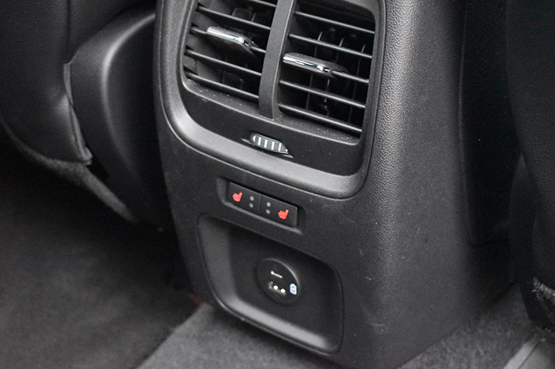
In a week of mixed weather I have had the opportunity to test all of Kuga’s temperature controls. A trip to the beach in 30-degree heat was eased by the dual zone climate control which cools rapidly. The return journey late at night was a colder affair and the rear seat passengers were excited to discover their own heated seats.
New Kuga represents a huge leap forward
My uncle drives a Kuga, a 2013 2.0 diesel. At a recent family gathering the conversation turned to cars and his desire for an upgrade. He had considered rivals such as Nissan Qashqai, Toyota Rav4 and Kia Sportage, but decided to stick with a Kuga.
I showed him around our long term Kuga ST line. He was impressed with the exterior looks, the fit and finish and the levels of equipment available, so much so that it convinced him to go for the newer model over the previous 2019 design he had been looking at, despite the obvious price increase.
However, he remains resistant to the idea of electric hybrid, despite it being well suited to work commuting due to charge times. Also he perceives a lack of charging infrastructure. The current Kuga is a leap forward compared with the old model which looked more closely
aligned to Ford’s commercial vehicles than the passenger car range.
However, the small infotainment screen perched on top of the dashboard feels less up-to-date than the large screen unit fitted to many new models.
For the first time, both Ford’s best-selling models are crossovers (Puma and Kuga). They now outsell the Fiesta and Focus hatchbacks by approximately 80%.
So how does Ford’s new best seller stack up against modern PHEV rivals such as the Vauxhall Grandland and the Peugeot 3008 hybrids?
All three are relatively close. The Kuga has the lowest CO2 at 25g/km and the highest residual value of £14,582. However, it has the most expensive service, maintenance and repair cost of the three at 5.29ppm.
Over four years, the total cost per mile (80,000 miles) sees the Kuga come out cheaapest at 38.94p followed by the Grandland (41.98p) and then the 3008 (46.98p) making the Kuga a smart choice for fleets.
Multiple modes make best use of EV range
According to real-world data from Ford, Kuga plug-in hybrid (PHEV) drivers across Europe covered 49% of their total distance travelled in 2021, using battery power alone.
It also indicates that more than two-thirds of journeys completed in a Kuga PHEVs were local trips of 35 miles or less that could be completed using just externally-charged battery power. You can read
more on this here: tinyurl.com/2ssh6z9c.
Certainly, I believe the above could apply to my own driving experience given the furthest I drive on a regular basis is 10 miles from my home to the office. However, getting into the mindset of constantly recharging the battery so you have it available when you need it, is a different matter.
Getting the best out of hybrid requires a different way of driving and journey planning that drivers are now becoming exposed to and slowly coming more accustomed to.
The Kuga gives the driver many options. It can decide for itself how much electric power to use. You can also manually prioritise the electric over the petrol engine, which is best used for emission-free city driving as this mode lacks power for the open road without the petrol engine back-up.
You can prioritise the petrol engine and save electric for use later in your journey, or switch to EV charge mode which lets the petrol engine do the work of charging the battery. On the short journeys where I have tried this, the system seems effective at returning power to the
battery. Indeed, our sister brand Parkers has reported that the battery can be back up to its 35 miles range after just an hour and a half of driving. That’s faster that a 7kW wall box, so it really is an effective system, ideal for situations where electric driving will be required later in the journey. However this does come at a cost, the EV charge mode is less efficient than the others as the petrol engine has to work harder so the mpg figure falls.
It’s a cost, efficiency and ecological decision we’ve never had to make before.
Big engine but small fuel bills
The cars comprising our test fleet underline that diesel is firmly on the back foot. Having enjoyed its elevation over the past 20 or so years, the transition from ‘dirty diesel’ is becoming rapid.
For PHEVs, the formula is usually small petrol engine coupled with an electric motor to boost power. Our Kuga hybrid bucks the tend, however, with a mighty 2.5-litre petrol engine. This size of petrol motor is virtually unheard of in today’s economic and green world of motoring.
It’s a long while since I’ve driven a car with a big petrol engine. It certainly has a more purposeful sound than most hybrids once the petrol engine is called upon, but is still quieter than most diesels.
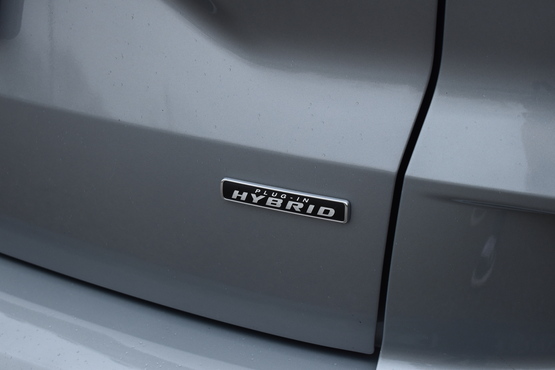
Power is impressive, acceleration is instant and the 225PS available should be adequate for most driving situations. Steering is light and positive and body roll is minimal.
With a fully discharged battery the Kuga is able to return a healthy average of 52mpg, which is impressive for such a big car. The battery can be charged on the move or by plugging in. When using a wallbox or public charger, the Kuga's battery can be filled in around four hours, or eigh hours if using a three-pin domestic socket.
With regular charging and lots of town driving, it's possible to use hardly any petrol at all.
Ford Kuga PHEV ST Line X joins our fleet
It didn't take long for the Ford Kuga to find favour with buyers. In 2021 it was Europe's best-selling PHEV model and in the UK it was the fourth most popular.
The car arrived in the UK in early 2020 and was recalled in the summer over a battery fire issue. Ford swiftly rectified the problem and it appears to have has little impact on the car's desirability.
As a family-oriented SUV, it's easy to see why. The Kuga is spacious, has a commanding driving position and promises impressive efficiency. It has a growing list of rivals, from the Citroen C5 Aircross PHEV to the VW Tiguan eHybrid, so there's plenty of choice for drivers in this space.
The current Kuga is Ford’s most electrified vehicle, available with three drivetrains: plug-in hybrid, self-charging hybrid and mild-hybrid. It is offered in five trim levels, Zetec, Titanium, ST-Line, ST-line X and the range-topping Vignale.
Our ST-line X plug-in hybrid comes in at £41,505, £3,500 more than the on-the-road price of £38,005 and is fitted with the following options: Solar silver paint (£600), mobile phone wireless charging pad (£150), 20-inch alloys (£1,100), technology pack (£550) and driver assistance pack (£1,100). It's the most cost-effective powertrain for company car drivers, attracting 12% benefit-in-kind tax thanks to its zero-emission range of up to 39 miles.
The ST-Line X comes with an exhaustive list of standard equipment, including a distinctive ST Line body kit, sports suspension and privacy glass. The interior features heated front and rear seats, a heated steering wheel, an eight-inch touchscreen navigation system with B&O speakers and a panoramic sunroof. There's also a suite of driver assistance aids to improve safety and make parking easier.
Fitted with a 2.5-litre, petrol engine, electric motor, and 14.4 kWh lithium-ion battery, the front-wheel-drive Kuga PHEV produces 225PS. The battery can be charged using a port on the front wing and is automatically topped up on the move using regenerative braking. To fully charge the battery from a domestic socket will take around six hours with a 7kW wallbox taking around three.
There are four drive modes available: Auto EV, which allows the car to choose the best power mode; EV Now, which prioritises the battery; EV Later which saves some battery power for later; and EV Charge which uses the petrol engine to charge the battery while driving.
Over the coming months we'll be testing the Kuga to see what its real-world efficiency is like and to establish how suitable it is as a company car.
Specs
| Manufacturer | Ford |
| Model | Kuga |
| Specification | Kuga SUV 2WD 2.5 Duratec PHEV 14.4kWh 225 SS ST-Line X Edition CVT 22MY |
| Model Year | 0.00 |
| Annual VED (Road tax) | £0 |
| BIK List Price | £38,800 |
| CO2 | 25g/km |
| BIK Percentage | 12% |
| Insurance Group | N/A |
| CC | N/A |
| Fuel Type | Petrol Hybrid |
| Vehicle Type | SUV and Crossover |
| Luggage capacity (Seats up) | 5litres |
Running Costs
| P11D | £38,800 |
| Insurance group | N/A |
| Fuel Type | Petrol Hybrid |
| Cost per mile | 100.07ppm |
| Fuel | 10.64ppm |
| Depreciation | 86.51ppm |
| Service maintenance and repair | 2.92ppm |
Rivals
Info at a glance
-
P11D Price
£38,800
-
MPG
256.8 (WLTP) -
CO2 Emissions
25g/km -
BIK %
12% -
Running cost
3 Year 60k : N/A 4 Year 80k : N/A -
Fuel Type
Petrol Hybrid



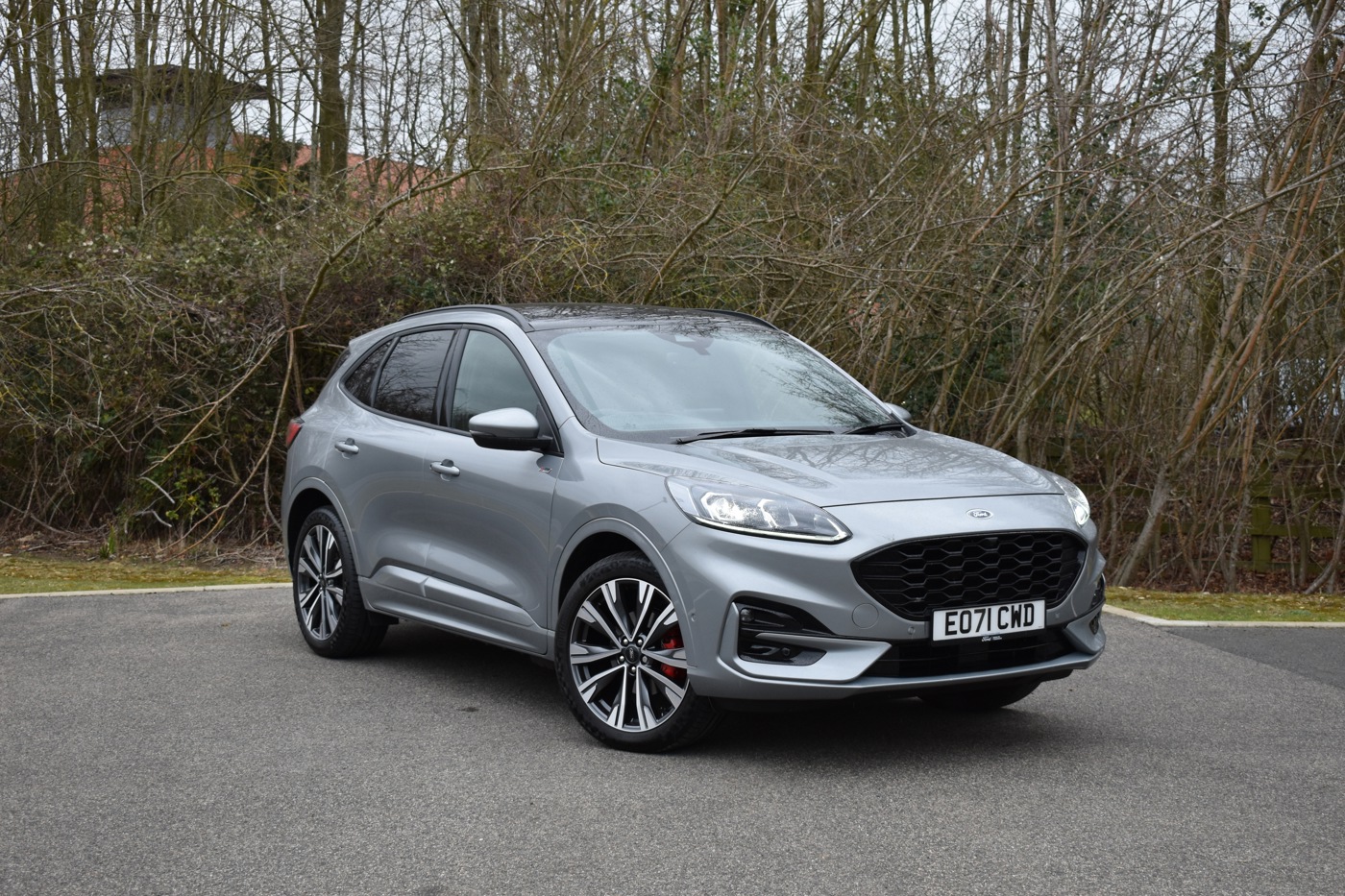
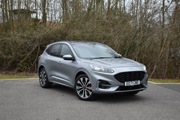
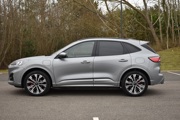
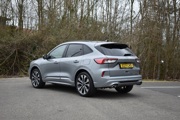
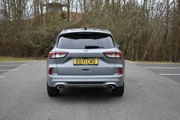

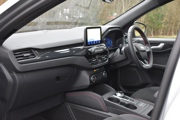
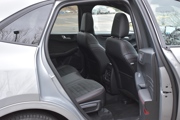
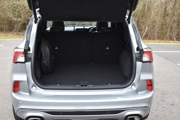
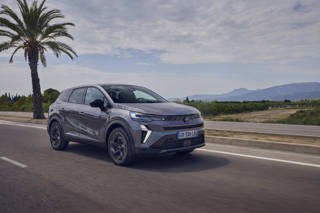
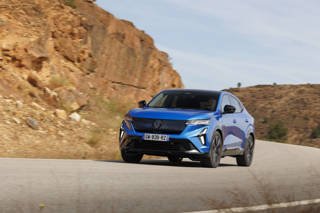
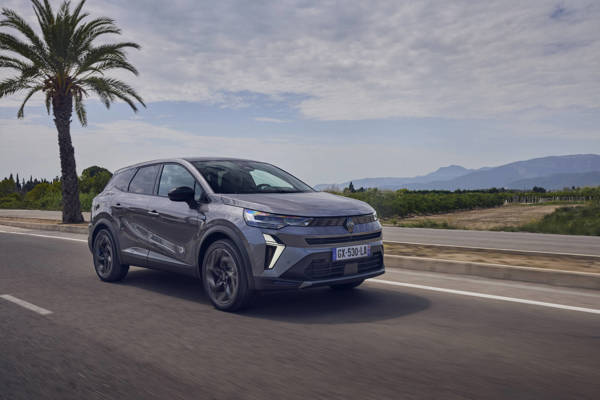
 Petrol Hybrid
Petrol Hybrid
